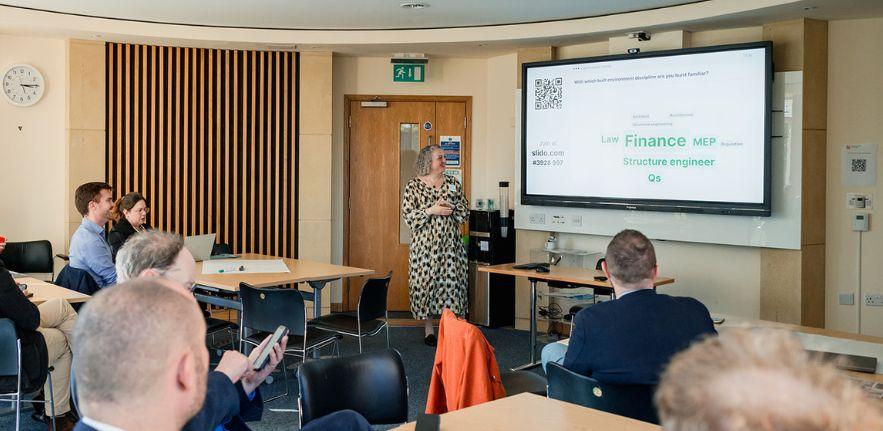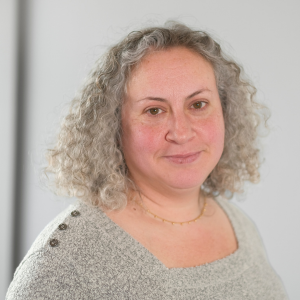
In this blog, Dr Kayla Friedman, Course Director for the Sustainability Leadership for the Built Environment programmes (SLBE) at the University of Cambridge Institute for Sustainability Leadership (CISL) explores the interdisciplinary nature of the built environment sector and considers the role of collaboration in delivering future-fit built spaces. First published on Construction news on 15 July 2025.
If you were at a dinner party and someone asked you what you do, what would you say? I say I run part-time master’s programmes for built environment professionals. In my previous life I’d have said I’m an urban designer, and before that, an architect. What I’m sure I wouldn’t have said, was that I worked in the built environment. And yet, that is how I categorise the many diverse professionals that I engage with as Course Director for the SLBE programmes at CISL.
When I interview applicants, I hear that they are architects and urban designers, engineers, planners, quantity surveyors, developers, investors, facilities managers, contractors, manufacturers, or solicitors – to name a few. No one identifies themselves as a built environment professional. This is one of the fundamental challenges of our industry – that the diverse professionals who collectively work on one single thing – our human habitat here on Earth – don’t commonly view themselves as a whole.
Recently, we marked the 30th anniversary of our programme that was, in part, founded on the concept of improving ‘interdisciplinary practice’ which, even 30 years ago, was identified as a critical key barrier to conceptualising, designing, delivering and managing best-practice projects. We used this moment to survey industry professionals about how things have changed in 30 years, and what we need to achieve in the next 30.
Over 400 professionals from across built environment disciplines around the world and with diverse years of experience contributed to the survey. When asked how aligned the drivers and motivations of built environment stakeholders were, only 24 per cent ticked mostly aligned or completely aligned, despite 97 per cent of respondents indicating that this alignment was important or extremely important.
One way to view this is by examining how professionals view sustainability as a driver in their projects. Ninety-five per cent of respondents said that, to them personally, sustainability was either very or extremely important. At the organisational level, 77 per cent felt the same, suggesting a relatively strong alignment between individuals and their workplaces.
However, this sense of alignment diminished when considering other stakeholders. Only 49 per cent believed sustainability was very or extremely important to the other professionals on their projects. This figure dropped to 47 per cent for national governments, 46 per cent for project clients, 41 per cent for end-users, and just 30 per cent for the general public in their countries. Even among professionals in the same discipline, only 50 per cent were perceived as placing high importance on sustainability.
Interestingly, our survey was taken by people working in architecture (10 per cent), construction (12 per cent), engineering (13 per cent), finance/investment (9 per cent), operations/management (12 per cent), planning/policy/regulation (7 per cent), property/real estate development (8 per cent), surveying (2 per cent), urban design/master planning (5 per cent), and the rest not identified by the above. How can all these people feel so clearly individually motivated and driven, but also feel they are not aligned with their collaborators?
It comes down to the fundamentals of teamwork. We know the built environment depends on diverse professionals, yet we continue to collaborate poorly and accept this as ‘normal’. Frustratingly, for every person in the survey who felt collaboration had greatly improved, another felt it had significantly worsened.
We often see ourselves as striving for the best while viewing others as falling short. The only way forward is to assume the best of our colleagues – to understand their perspectives, motivations and goals. We must be more open in dialogue and seek common ground. Only through genuine collaboration can we design, deliver and manage the built environment we need.





